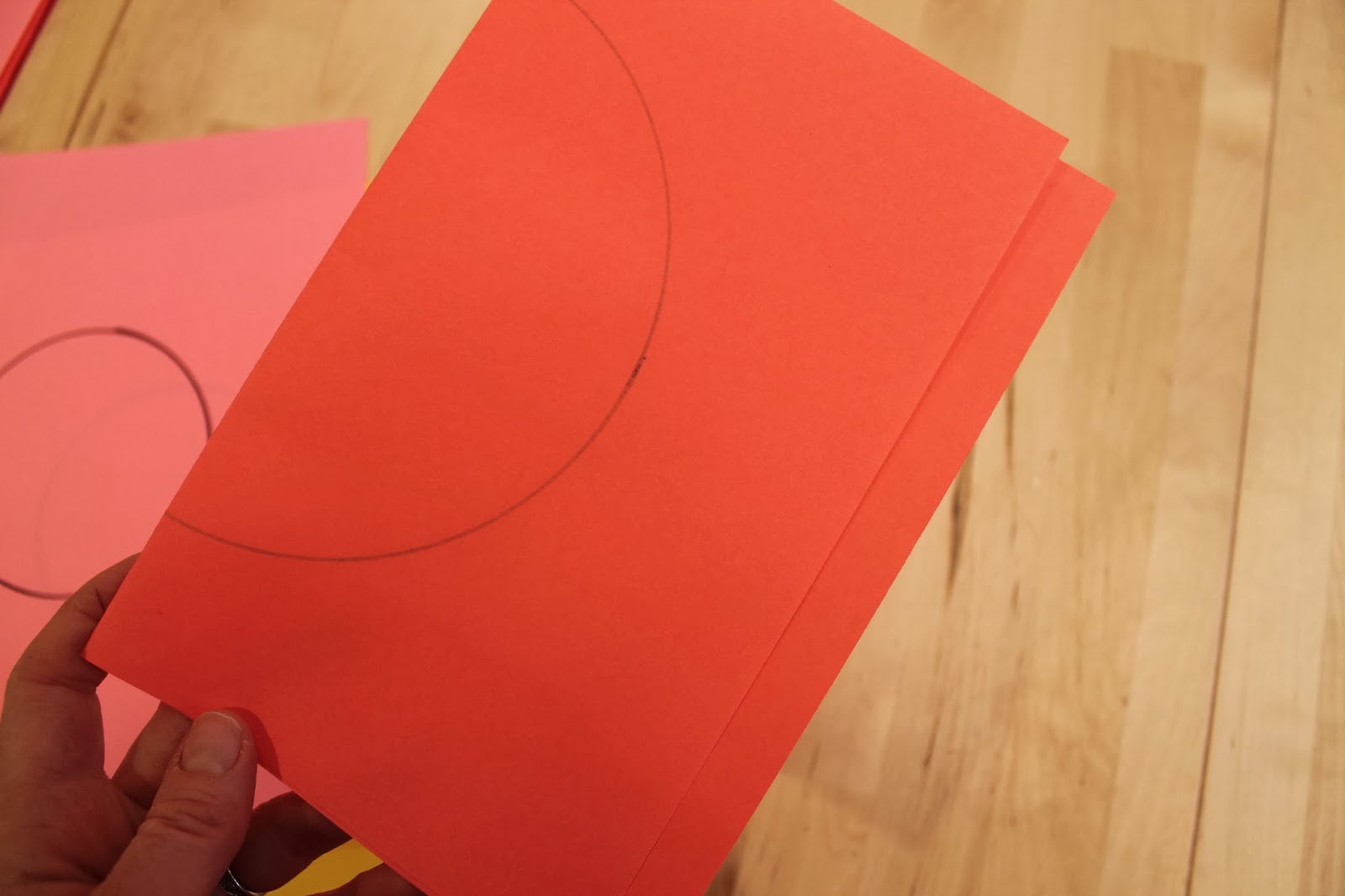(Disclosure: This was our family home evening. It may look like there was no gospel component, but I applied the all-truth-is-spiritual loophole.)
Beforehand, I traced circles of different sizes on paper, and I got out the pipe cleaners and cutting tool. Pipe cleaners don't stretch, and they can be bent into a nice arc shape, so they're preferable to yarn.
Then, I explained that the diameter of a circle is a line that goes through the middle of the circle and cuts it in half. We found the diameters by folding the circle in half, matching up opposite "edges" of the circle. (Math people, forgive me for my loose terminology. I was trying to speak at a kindergarten level.)
I had used black permanent marker, so we were able to see through the paper. That helped us fold the circles in half nicely.
Then we cut pipe cleaners to the length of each circle's diameter.
We saw that if we wanted to wrap the pipe cleaner all the way around the circle, it wouldn't be long enough. I demonstrated bending the pipe cleaner to fit the curve of the circle. I asked, "How many lengths of pipe cleaner would it take to go all the way around the circle?" Five-year-old Johnny guessed three.

We marked how many pipe cleaner lengths it took to go all the way around the circle. Johnny predicted that we would get the same result for each circle, no matter the size. Sure enough, for each circle, we got "three plus a little." We determined that the "little bit" was less than one half. (My husband had a fun time estimating the length of the extra bit by repeatedly folding the pipe cleaner, but that was over Johnny's head.)
We called our special number pi. Johnny immediately wanted to try a new way of counting: One, two, pi, three, four, five . . . We helped him figure out that pi is actually somewhere between three and four, not two and three.
The two-year-old was just happy that the whole family was doing something involving pipe cleaners. We gave him his own circle to hold.
When we were finished, we each had a slice of pie.



I really like the part about reasoning what the results would be for different sized circles. For a long time I didn't appreciate the fact that pi is in fact a constant. One consequence of this that I think is cool (and maybe less expected) is that a semicircular path going from point A to point B is the same length as a path from A to B made of lots of little semicircles each starting and ending on the line AB. I'm not sure whether that's too advanced for little kids. I think I need to get some pipe cleaners and try this with my kids.
ReplyDeleteYes, that is neat. It reminds me of the dangers of relying on appearances when trying to find an approximating process.
DeleteHere's what I mean: If you let the length of the little semicircles approach zero, then from a distance the string of semicircles looks more and more like the diameter of the whole circle, even though its length is not approaching the length of the diameter.
When I taught calculus, the kids always had a hard time with the surface area of a solid of revolution. We had spent long enough volumes that they were comfortable with the concept of volume as the limit of a sequence of better and better approximations. They could visualize a bunch of little cylinders lined up, and they could see that if we took thin enough slices of the solid, approximated each slice's volume as a cylinder, then added them up, we could get as close as we wanted to the real volume.
The problem was this: They imagined that they could take a bunch of cylinders approximating the solid and then take the lateral surface area of each cylinder (2*pi*f(xn)*length of the subinterval) and add them together. They thought that if the subintervals were small enough, then the cylinders approximate the surface area. It's visually compelling, but it doesn't work.
This is great! You are amazing.
ReplyDeleteThank you, thermos.
Delete